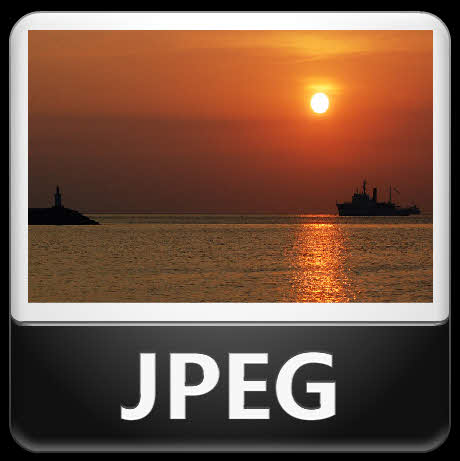Definition of Joint Photographic Experts Group (JPEG or JPG) in Network Encyclopedia.
What is Joint Photographic Experts Group?
Abbreviated JPEG; also sometimes abbreviated JPG.
An image-compression standard and file format that defines a set of compression methods for high-quality images such as photographs, single video frames, or scanned pictures. JPEG does not work very well when compressing text, line art, or vector graphics.JPEG uses lossy compression methods that result in some loss of the original data.
When you decompress the original image, you don’t get exactly the same image that you started with, although JPEG was specifically designed to discard information not easily detected by the human eye.JPEG can store 24-bit color images in as many as 16 million colors; files in GraphicsInterchange Format (GIF) form can only store 256 colors.
How it works
The JPEG compression algorithm is at its best on photographs and paintings of realistic scenes with smooth variations of tone and color. For web usage, where reducing the amount of data used for an image is important for responsive presentation, JPEG’s compression benefits make JPEG popular. JPEG/Exif is also the most common format saved by digital cameras.

However, JPEG is not well suited for line drawings and other textual or iconic graphics, where the sharp contrasts between adjacent pixels can cause noticeable artifacts. Such images are better saved in a lossless graphics format such as TIFF, GIF, PNG, or a raw image format. The JPEG standard includes a lossless coding mode, but that mode is not supported in most products.
As the typical use of JPEG is a lossy compression method, which reduces the image fidelity, it is inappropriate for exact reproduction of imaging data (such as some scientific and medical imaging applications and certain technical image processing work). JPEG is also not well suited to files that will undergo multiple edits, as some image quality is lost each time the image is recompressed, particularly if the image is cropped or shifted, or if encoding parameters are changed – see digital generation loss for details. To prevent image information loss during sequential and repetitive editing, the first edit can be saved in a lossless format, subsequently edited in that format, then finally published as JPEG for distribution.

JPEG standard
The JPEG standard (ISO/IEC 10918) was created in 1992 (latest version, 1994) as the result of a process that started in 1986. Though this standard is generally considered as a single specification, in reality it is composed of four separate parts and an amalgam of coding modes.
Part 1 of JPEG (ISO/IEC 10918-1 | ITU-T Recommendation T.81) specifies the core coding technology and it incorporates many options for encoding photographic images. Part 2 defines the compliance testing. Part 3 defines a set of extensions to the coding technologies of Part 1, and via an amendment, the SPIFF file format was introduced. Part 4 focuses on the registration of JPEG profiles, SPIFF profiles, SPIFF tags, SPIFF color spaces, SPIFF compression types, and defines the Registration Authorities. And lastly, Part 5 specifies the JPEG File Interchange Format (JFIF). Without any doubt, it can be stated that JPEG has been one of the most successful multimedia standards defined so far.
While JPEG (Rec. ITU T.81 | ISO/IEC 10918) is still the most dominant still image format around, it may seem surprising that ISO/IEC never provided a reference software demonstrating a proper implementation of the standard. Therefore, JPEG initiated an initiative to create a new reference implementation for ISO/IEC 10918. More information on the call can be found here.
JPEG.ORG
The Joint Photographic Experts Group (JPEG) committee has a long tradition in the creation of still image coding standards. JPEG is a joint working group of the International Standardization Organization (ISO) and the International Electrotechnical Commission (IEC). More specifically, the JPEG committee is Working Group 1 (WG1), Coding of Still Pictures, of JTC 1’s subcommittee 29 (SC29), Coding of Audio, Picture, Multimedia and Hypermedia Information.
Another working group within SC29 is WG11 – Coding of Moving Pictures and Audio – well-known as the Moving Picture Experts Group (MPEG). However, the word «Joint» in JPEG does not refer to the joint efforts of ISO and IEC, but to the fact that the JPEG activities are the result of an additional collaboration with the International Telecommunication Union (ITU).
JPEG meets at least three times a year to discuss and create the standards for still image compression and processing.
NOTE
Web tools to compress images: